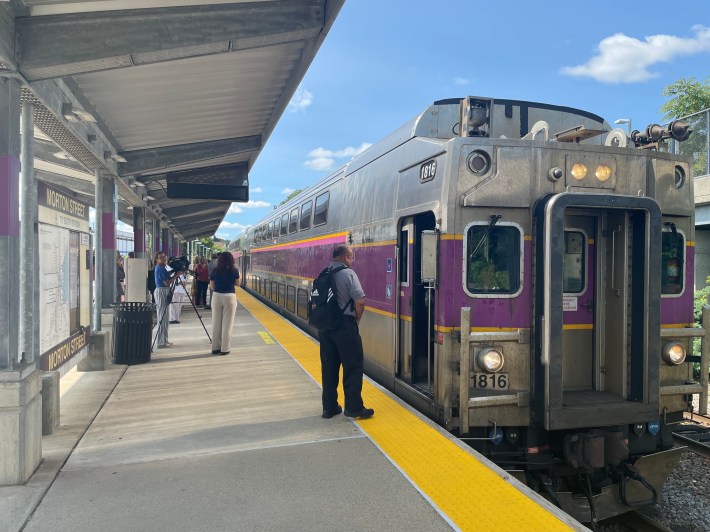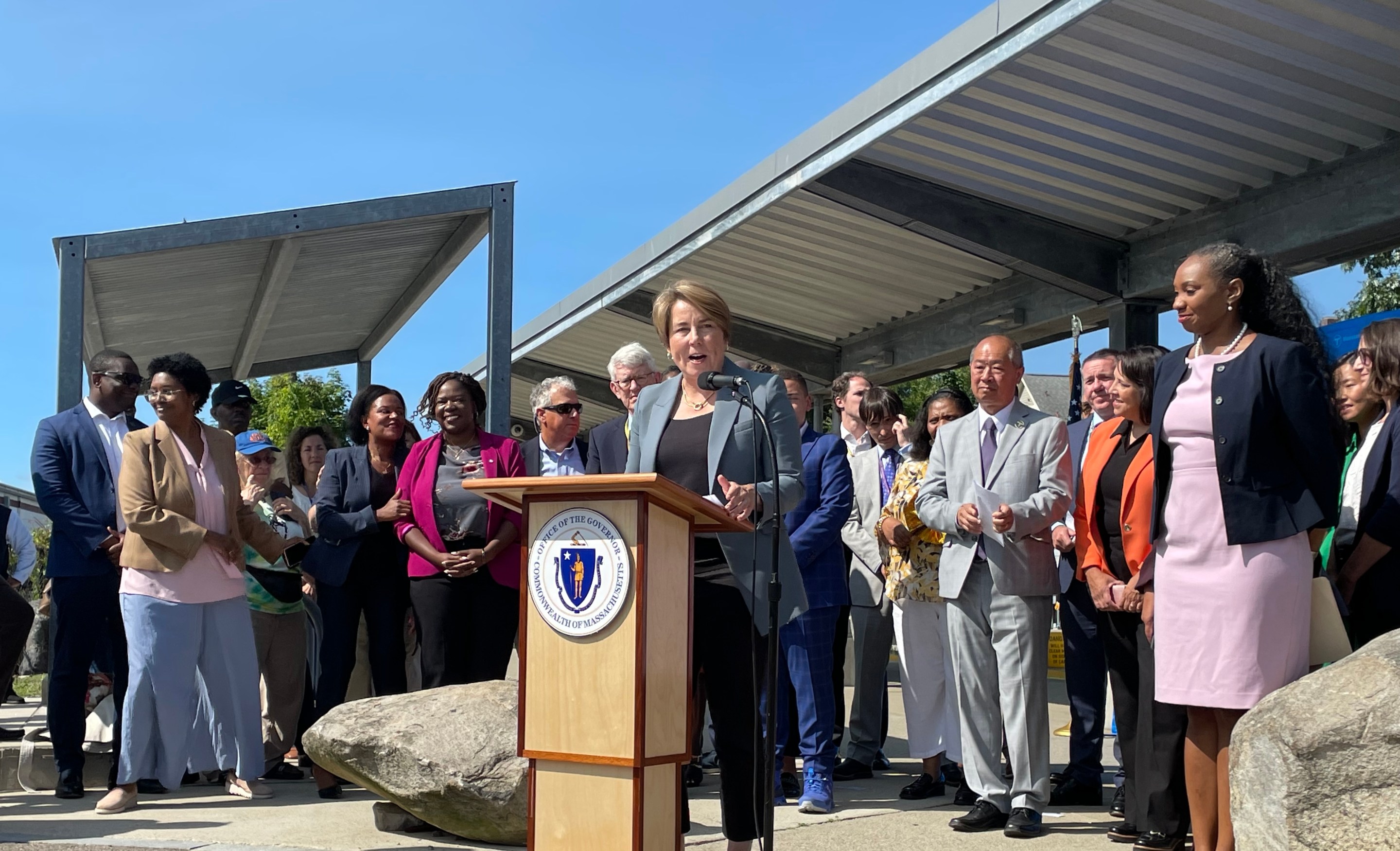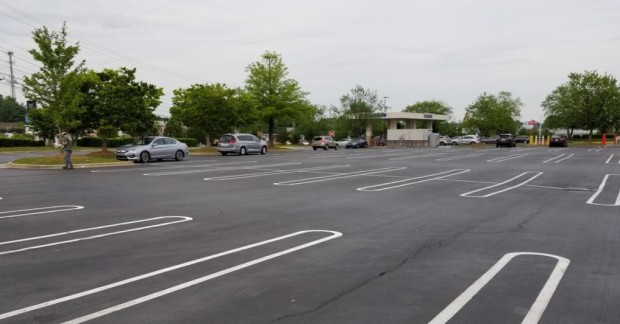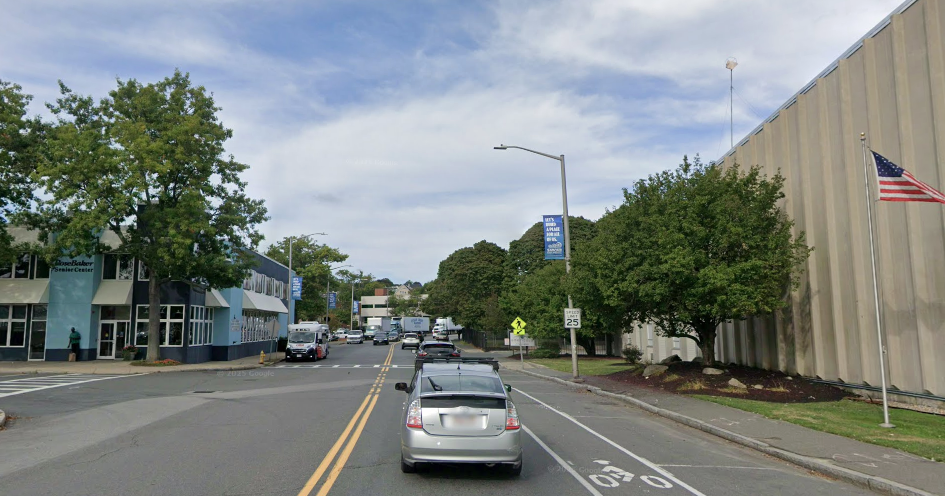A a Tuesday morning press event in Mattapan, elected officials joined neighborhood transit and environmental justice advocates to celebrate the MBTA's decision to electrify and add significantly more transit service for the predominantly Black neighborhoods it runs through.
As we reported in March, the MBTA and Keolis, the company that operates the MBTA commuter rail system, have been collaborating on a proposal to deliver increased transit service with new battery-electric trains on the Fairmount Line. The MBTA board of directors formally endorsed the proposal during its July meeting.
Tuesday's event was mostly celebratory – especially for neighborhood advocates who have been fighting for decades to improve and upgrade the Fairmount Line so that residents in Mattapan and Hyde Park could get access to the kind of transit service that most other Boston neighborhoods have.
"It's a wonderful, wonderful day," said Marilyn Forman, a co-chair of the Fairmount Indigo Coalition.
State Rep. Brandy Fluker Oakley, who represents Mattapan and parts of Dorchester and Milton, reminded attendees that the MBTA trains didn't even stop to pick up passengers along most of the Fairmount Line during the 1980s.
"Think about that. A diesel train, running through a predominantly Black community, not even having the intentionality to stop for up and let us go to work," said Rep. Fluker Oakley.
But over the decades, advocates from the surrounding neighborhoods have won a steady trickle of improvements to the Fairmount Line's infrastructure and service levels.
Since 2005, the T has added new stations and rebuilt existing stations with new ADA-accessible high-level platforms. As of summer 2024, trains are running every 30 minutes on weekdays.

Project will save millions of gallons of diesel fuel
The T expects that its new electric trains, which it plans to lease in an upcoming procurement, will be quieter and more reliable, with fewer breakdowns than the existing diesel-burning engines.
"The BEMUs (battery electric multiple unit trains) will cut fuel use by 1.6 million gallons annually," said MBTA General Manager Phillip Eng during Tuesday's event.
Eng also said that the new electric trains will be able to accelerate more quickly, potentially reducing the trip time between Readville and downtown Boston.
The T and Keolis also plan to significantly increase service on the Fairmount Line when the electric trains arrive. Trains generally run every 30 minutes today; in 2028, when the new trains start running, plans call for trains to run every 20 minutes.
New trains could get tryouts on other commuter rail lines
"We have a goal and a vision," said Governor Maura Healey during her opening remarks at Tuesday's event. "And that is to operate a 100-percent electric commuter rail system. It's for our climate, for our residents, and for our future."
MBTA officials at Tuesday's event suggested that the Fairmount Line electrification project could help meet that goal by letting the T test the new technology on other commuter rail lines.
Alistair Sawers, the head of the MBTA's Regional Rail Transformation Office, told StreetsblogMASS that "the intent is that we'll have enough (electric) trains to run service here, but we'll have enough to test on other lines as well."
As part of the Fairmount Line electrification project, Keolis will build a new maintenance and recharging facility for the new electric trains at the MBTA's Readville yard, which is located near the point where the Fairmount Line intersects with the Providence Line.
The Providence Line already has wires to power Amtrak's electric Northeast Regional trains and the Acela. Several other MBTA regional rail lines also branch off from those electrified tracks.
From the new yard in Readville, the T's new battery-electric trains could draw power from the Providence Line's wires, then continue to run on battery power on the Franklin/Foxboro line, the Stoughton branch of the Providence Line, or the Needham Line.
Sawers told StreetsblogMASS that while the Providence Line already has most of the infrastructure the T needs to run electric trains, the T and Keolis ultimately decided to focus on electrifying the Fairmount Line first because it's a smaller, more manageable project.
"It's self-contained. It needs a relatively small fleet, whereas the Providence line would need a bigger fleet," said Sawers.






